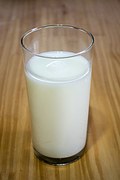It is believed that the term “cowboy” originated as a derogatory term used to describe black cowhands.
The Oxford English Dictionary lists the satirist Jonathan Swift as the first person to use the word “cowboy”.
The traditional cowboy look arose from Mexican vaqueros and the word buckaroo came about as a mispronunciation of the word vaquero.
The Oxford English Dictionary lists the satirist Jonathan Swift as the first person to use the word “cowboy”.
The traditional cowboy look arose from Mexican vaqueros and the word buckaroo came about as a mispronunciation of the word vaquero.
In the American West of the 1800s, up to one in four Texan cowboys was African American. The number of Mexican cowboys was even greater.
A 19th century breakfast for an American cowboy included salt pork or bacon, and eggs, which being shipped west for considerable distances, sometimes went bad.
Dinner (the noontime meal) and supper was similar to breakfast, with the addition of beef and beans and canned or dried fruit for dessert.
Cowboys everywhere liked fresh beef especially steaks, fried well-done in a cast iron skillet, piled high. Accompanying this would be soda biscuits made from sourdough and gravy.
During cattle drives, cowboys often had to make do with less appealing cuts of meat such as pork butt, pork ribs, beef ribs, venison and goat. These tough pieces of meat were slow cooked at a low temperature for five to seven hours over wood or charcoal.
Cattle drive cooks had to serve three meals a day, seven days a week. They kept alert to find and pick up wood for the fire as they traveled in the chuck wagon. They had to constantly go ahead of the cattle drives and prepare food in all types of weather, holding a tarp over the fire, if necessary.
Cooks were also "jacks of all trades," often playing the roles of doctor, barber, and even dentist for the drive hands.
The cowboy's clothing was suited to his job. He wore a woolen or cotton shirt and heavy woolen trousers. Over his trousers were his chaps (pronounced shaps, from the Spanish chaparajos). These leggings were of heavy leather for summer wear and of fur for the cold northern winters. They protected his legs from brush, cactus, and frost.
Around the cowboy's neck a big handkerchief was tied to protect him from the sun. It could also be pulled up around his mouth and nose when dust was thick.
A high-crowned, broad-brimmed felt hat, the sombrero, shielded the cowboy from the sun and rain. Some preferred the bowler hat, because of its practicality and strength
The cowboy's soft-legged boots had high heels set far under the instep to hold his ankle clear of the heavy stirrup.
The world record for the largest cowboy boots ever made was awarded for a pair measuring 2.5 meters tall and 2.38 metres long – they were made from five cows’ worth of leather.
Sources Cool Trivia, Compton's Interactive Encyclopedia © 1998 The Learning Company, Inc, Food For Thought by Ed Pearce
A 19th century breakfast for an American cowboy included salt pork or bacon, and eggs, which being shipped west for considerable distances, sometimes went bad.
Dinner (the noontime meal) and supper was similar to breakfast, with the addition of beef and beans and canned or dried fruit for dessert.
Cowboys everywhere liked fresh beef especially steaks, fried well-done in a cast iron skillet, piled high. Accompanying this would be soda biscuits made from sourdough and gravy.
During cattle drives, cowboys often had to make do with less appealing cuts of meat such as pork butt, pork ribs, beef ribs, venison and goat. These tough pieces of meat were slow cooked at a low temperature for five to seven hours over wood or charcoal.
Cattle drive cooks had to serve three meals a day, seven days a week. They kept alert to find and pick up wood for the fire as they traveled in the chuck wagon. They had to constantly go ahead of the cattle drives and prepare food in all types of weather, holding a tarp over the fire, if necessary.
Cooks were also "jacks of all trades," often playing the roles of doctor, barber, and even dentist for the drive hands.
 |
| American cowboy, 1887 |
The cowboy's clothing was suited to his job. He wore a woolen or cotton shirt and heavy woolen trousers. Over his trousers were his chaps (pronounced shaps, from the Spanish chaparajos). These leggings were of heavy leather for summer wear and of fur for the cold northern winters. They protected his legs from brush, cactus, and frost.
Around the cowboy's neck a big handkerchief was tied to protect him from the sun. It could also be pulled up around his mouth and nose when dust was thick.
A high-crowned, broad-brimmed felt hat, the sombrero, shielded the cowboy from the sun and rain. Some preferred the bowler hat, because of its practicality and strength
The cowboy's soft-legged boots had high heels set far under the instep to hold his ankle clear of the heavy stirrup.
The world record for the largest cowboy boots ever made was awarded for a pair measuring 2.5 meters tall and 2.38 metres long – they were made from five cows’ worth of leather.
Sources Cool Trivia, Compton's Interactive Encyclopedia © 1998 The Learning Company, Inc, Food For Thought by Ed Pearce
























